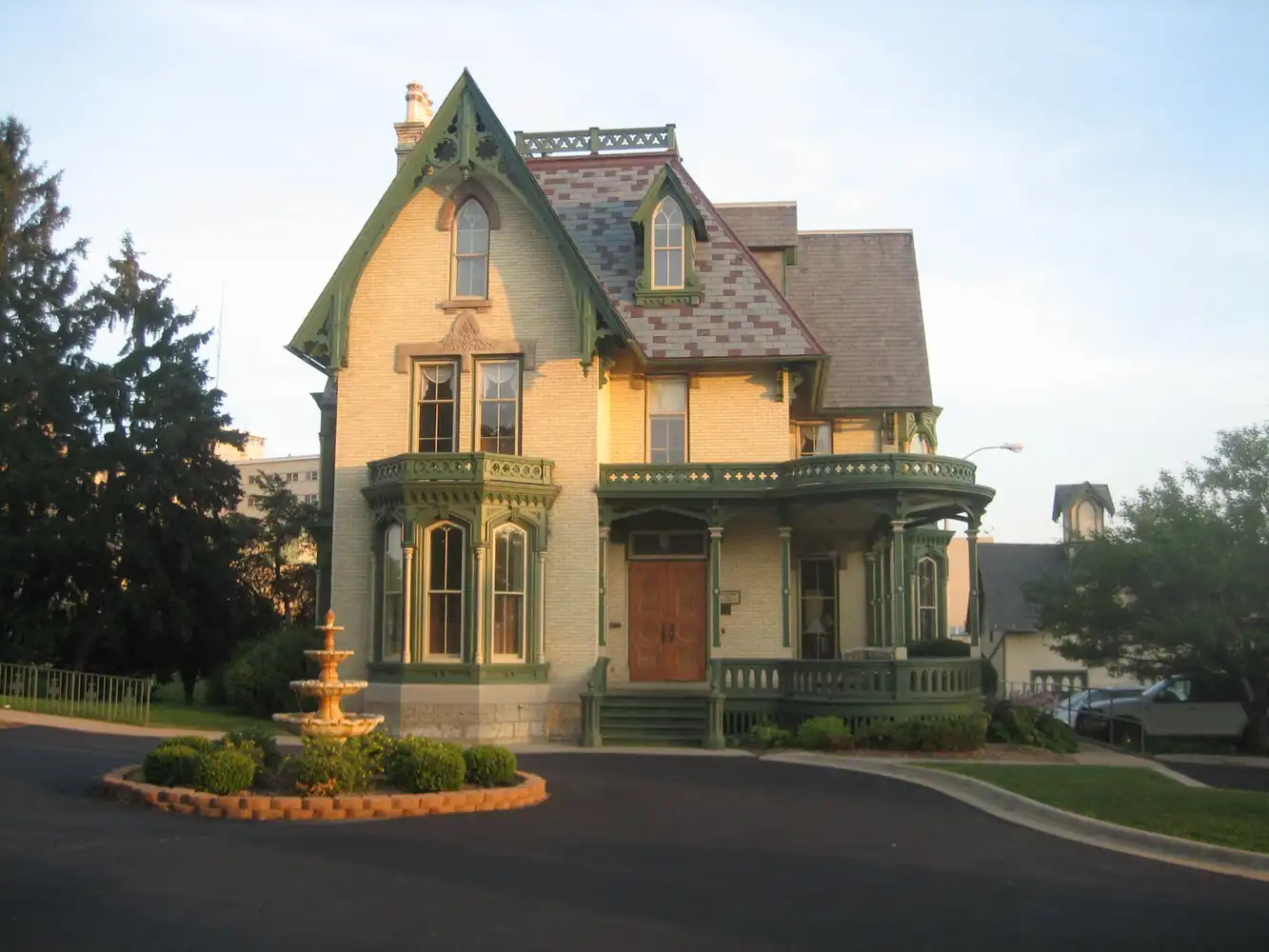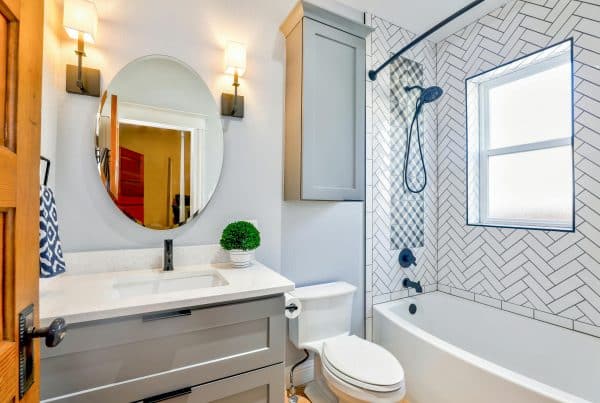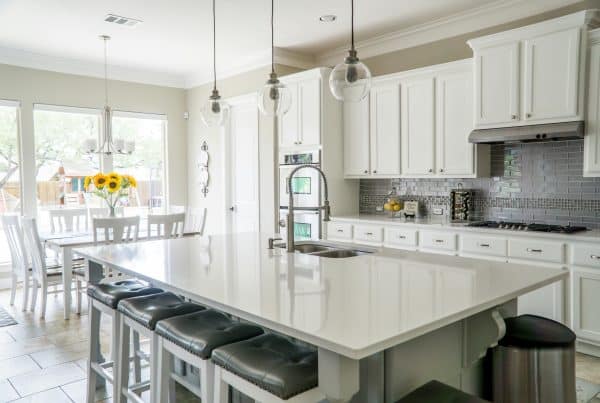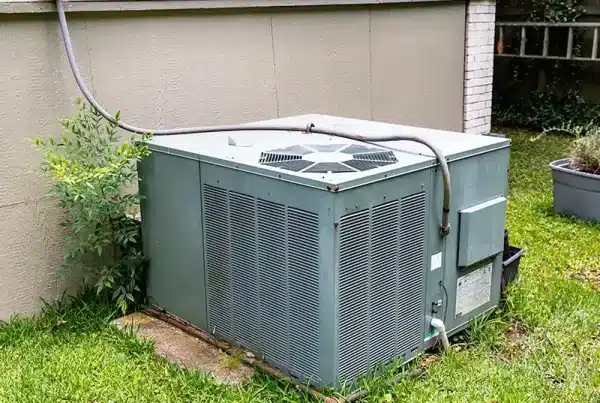Victorian style homes have charmed homeowners for a long time—about 180 years. This is thanks to their distinctive architectural elements and timeless appeal.
To discover more about Victorian style homes, continue reading our compilation of 9 interesting facts.
If you’re in the market for a new home, be sure to utilize our Home Search tool to discover your dream home in the greater Las Vegas area.
Please note that while Victorian and Edwardian homes may be scarce in Las Vegas, some homes in the area draw inspiration from these architectural styles, incorporating elements such as intricate woodwork, decorative windows, and charming front porches while offering modern amenities and floor plans. We can help you find the right home for your needs.
What Is A Victorian Style Home?
A Victorian style home is a residential architectural design that emerged during Queen Victoria’s reign (1837-1901). This home style originated in the UK before coming to the United States.
These homes reflect the technological advancements of their era, as well as the aesthetic preferences of the middle class during the Industrial Revolution.
Today, the influence of this style is widespread.
Quick Note: Victorian Style Homes vs Edwardian Style Homes. What’s The Difference?
Before we dive into the 9 facts about Victorian style homes, let’s take a moment to clarify the difference between Victorian and Edwardian style homes to avoid any confusion.
While these styles share similarities, they do have some distinct differences.
Floor Plans: Victorian homes often have more compartmentalized floor plans, with separate rooms for specific purposes. Edwardian homes, by contrast, have more open and fluid floor plans, reflecting a shift towards a more modern style.
Ornamentation: Victorian homes are known for their elaborate ornamentation, consisting of decorative brackets, spindles, and more. Edwardian homes, on the other hand, tend to have a simpler aesthetic, with less emphasis on ornate details.
Exterior Materials: Victorian homes often use a mix of exterior materials, such as brick, stone, and wood siding. Edwardian homes, however, tend to have a more uniform exterior made from lighter-colored materials. Note that country homes during the Edwardian period often retained a Mock Tudor style, which included elements like leaded windows and timber framing.
Examples of Victorian Style Homes – Check Out The Video!
9 Interesting Facts About Victorian Style Homes
1. Victorian Style Homes Have Several Distinct Sub-Styles
Victorian style homes are not a single, homogeneous thing. They’re part of an umbrella that includes different architectural sub-styles.
Gothic Revival – Gothic Revival homes draw inspiration from medieval Gothic architecture, making them one of the most notable Victorian sub-styles. These homes have steeply pitched roofs, pointed arch windows, and decorative tracery. Gothic Revival homes also feature asymmetrical floor plans and may even have architectural elements such as towers, which add to their dramatic appeal.
Italianate – Italianate homes take an interesting turn from the typical Victorian style. They look somewhat like an Italian villa but with undertones of Victorian architecture and are characterized by low-pitched roofs, wide eaves, and tall, narrow windows. Moreover, they often have square towers or cupolas and may feature ornate hood moldings over the windows.
Queen Anne – Queen Anne homes are some of the more recognizable Victorian style homes. They constitute a curious sub-genre known for its mix of exterior materials, such as brick, wood, and stone. Queen Anne homes also feature wrap-around porches with decorative spindles and brackets, asymmetrical facades, steep roofs, and towers or turrets.
Second Empire – Influenced by French architecture, Second Empire homes are distinguished by their mansard roofs, which have a steep lower slope and a flatter upper slope. They often have dormer windows, bracketed cornices, and decorative molding.
Stick – Stick style homes, which are another Victorian sub-style, stand out primarily because they have exposed wooden framing. This framing is used as a decorative element on the exterior. Stick style homes often have steeply pitched roofs, overhanging eaves, and large porches with decorative trusses, all of which contribute to their striking appearance.
2. Victorian Style Homes are Named After Queen Victoria
Victorian style homes get their name from Queen Victoria, who reigned over the United Kingdom from 1837 to 1901. This period saw the rise of various architectural styles collectively referred to as Victorian.
Although Queen Victoria did not directly influence the style that bears her name, her reign coincided with its development. Later, Victorian style homes were popularized in the United States, thanks to mass production that made them more widely accessible.
Interestingly enough, Queen Victoria’s personal taste leaned more towards Renaissance and Italianate styles.
3. Intricate Ornamentation is The Hallmark of Victorian Style Homes
One of the most striking features of Victorian style homes is their elaborate ornamentation, which includes trim, brackets, spindles, and frieze boards.
These additions became affordable for the middle class during the Industrial Revolution as mass-produced elements, such as pre-cut trim, allowed for their widespread application.
Today, the intricate ornamentation commonly seen on Victorian style homes speaks to a prior era’s love for the ornate and decorative. It’s a style that still appeals to many homebuyers.
4. Steeply Pitched Roofs Offer Effective Drainage and Attic Space
Victorian style homes are known for their steeply pitched roofs, which is a practical design choice for wet climates. The steep pitch prevents water from pooling, thus reducing the risk of leaks.
Additionally, steep roofs allow for more expansive interior attic space. Some Victorian style homes have large attics with picturesque windows characteristic of the Victorian style.

Victorian-era house | Photo by Daniel Penfield | Attribution-Share Alike 3.0 Unported
Some Victorian homes feature dormers that provide natural light, creating brighter, better-ventilated, and more inviting attic spaces. In fact, some Victorian-style attics are nice enough to serve as bedrooms, offices, or playrooms, which can add value to homes.
5. Modern Victorian Homes Often Blend Traditional and Contemporary Elements
In modern Victorian style homes, features like wainscoting, crown molding, and rich paint colors are combined with peel-and-stick wallpaper or minimalist decor to create dynamic variety. But this is just one of many approaches.
Incorporating Victorian elements into a modern home can lead to several different expressions, such as:
- Modern lighting fixtures in a room with traditional Victorian architecture.
- Antique pieces alongside modern decor.
- Antique rugs with contemporary furniture.
- A traditional velvet sofa with modern patterned pillows.
- A modern metal frame around a classic oil painting.
Taking it a step further, some modern Victorian homes feature open floor plans, which is a big departure from traditionally compartmentalized Victorian-style layouts.
Check out this gorgeous, modern Victorian style home! It features a masterful combination and reimagining of traditional architectural details with contemporary design elements.
6. Victorian Style Homes Symbolized Prosperity and Status in Late 19th Century America
In the late 1800s, Victorian style homes were a symbol of wealth for America’s middle and upper classes. Their ornamentation and grand scale stood in sharp contrast to the more utilitarian structures found in cities, as well as the rugged lodges used by American pioneers.
In the finest Victorian style homes, marble, stained glass, and hardwood floors were used, setting them worlds apart from what many Americans of the time could afford.
Today, the main reason homebuyers seek Victorian style homes is for their unique character, craftsmanship, and charm.
An interesting fact: The term “Queen Anne front and Mary Anne back” was sometimes used to describe Victorian style homes that had elaborate front façades meant to impress passersby. Meanwhile, the back of the house was plain and unadorned.
7. High-End Victorian Style Homes Still Use Stained Glass
Today, many restored Victorian homes retain their original stained glass windows or incorporate new stained glass designs. One example is this home: It’s a Victorian style home with multiple stained glass windows.
Typically, in upscale Victorian style homes, features of stained glass windows include:
- Intricate designs with floral patterns, geometric shapes, and more.
- Placement in prominent areas such as entryways, stairwells, or bay windows.
- Custom-made options to fit any space, adding vintage charm even in new constructions.
8. Intricate Ironwork Adorns Many Victorian Style Homes
Victorian style homes are known for their ironwork, which often features floral patterns and other Victorian motifs. For instance, decorative iron balustrades and scrollwork are sometimes used for balcony rails and gates in Victorian style homes.
On the interior, ironwork is used for railings and staircases. There is a wide range of applications, including fireplace screens, chandelier frames, and decorative grilles for vents and windows.
9. Victorian Style Homes Often Feature Pocket Doors
In Victorian style homes, pocket doors are sometimes used as room dividers, especially for formal living and dining rooms. But they have other uses as well, such as creating private nooks or concealing storage areas.
Given their many uses, pocket doors first gained popularity in the 1850s, then swiftly reached their peak by the end of the century. However, they remain an integral part of historic Victorian style homes today.
Today, many historic Victorian homes retain their original pocket doors as modern renovators seek to preserve or restore these unique elements.
Find Your Dream Home With The Real Estate Guy
If you’re ready to find your dream home, The Real Estate Guy is here to help. Visit our Home page and see why so many people in the Las Vegas area choose us.
Featured Image Source: Rockford Il Lake Peterson House
Photographer: IvoShandor
Source: Wikimedia Commons
Licenses: CC BY-SA 3.0 and CC BY 2.5
Copyright © 2007 IvoShandor
This work is licensed under the Creative Commons Attribution-Share Alike 3.0 Unported license and the Creative Commons Attribution 2.5 Generic license. To view a copy of this license, visit the links above. This image was compressed. Disclaimer: The use of this image does not imply endorsement by the photographer or Wikimedia Commons. The image is used solely for illustrative purposes in the context of discussing Victorian style homes.
Blog Post Image Source: Victorian-era house in Painted Post, New York
Photographer: DanielPenfield
Source: Wikimedia Commons
License: CC BY-SA 3.0
Copyright © 2010 DanielPenfield
This work is licensed under the Creative Commons Attribution-Share Alike 3.0 Unported license. To view a copy of this license, visit the link above. This image was compressed. Disclaimer: The use of this image does not imply endorsement by the photographer or Wikimedia Commons. The image is used solely for illustrative purposes in the context of discussing Victorian style homes.






